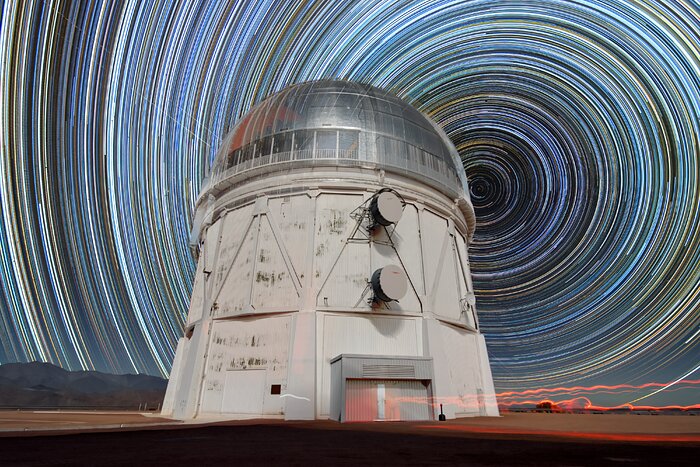Southern Vortex above Blanco
Stars swirl around the south celestial pole in this timelapse image of the night sky captured at the Víctor M. Blanco 4-meter Telescope. The Blanco Telescope is located on the summit of Cerro Tololo in northern Chile, home to the U.S. National Science Foundation Cerro Tololo Inter-American Observatory (CTIO), a Program of NSF NOIRLab.
Photographers create timelapses like this by combining multiple long-exposure images of the night sky. As Earth rotates throughout the night, the stars appear to circle the north or south celestial poles. The southern hemisphere’s pole star, Sigma Octantis, is located in the middle of the ‘vortex’ in the image. It is fainter than the northern hemisphere’s more recognizable pole star, Polaris. To the upper left of the Blanco telescope, the illuminated pathways of two satellites intersect the star trails.
The red squiggles in the foreground were created by someone walking with a red flashlight. Red lights are commonly used around observatories to preserve night vision because dark-adapted human eyes are less sensitive to red wavelengths of light.
Credit:CTIO/NOIRLab/NSF/AURA/D. Munizaga
About the Image
| Id: | iotw2429a |
| Type: | Photographic |
| Release date: | July 17, 2024, noon |
| Size: | 6000 x 4000 px |
About the Object
| Name: | Víctor M. Blanco 4-meter Telescope |
| Category: | CTIO |
